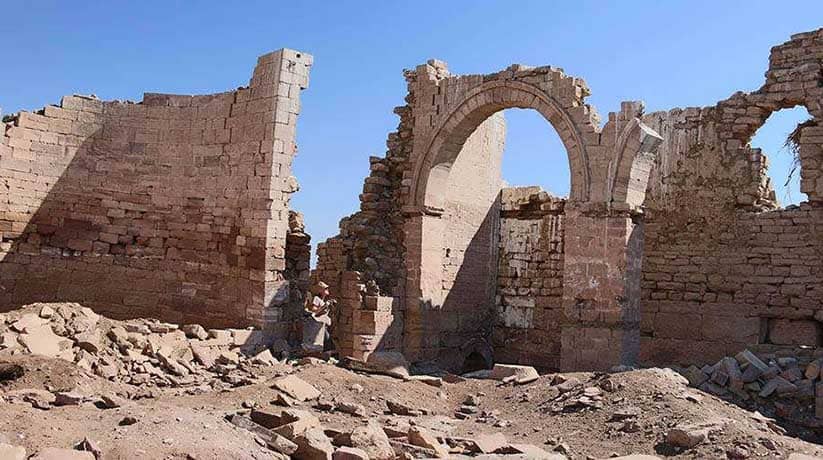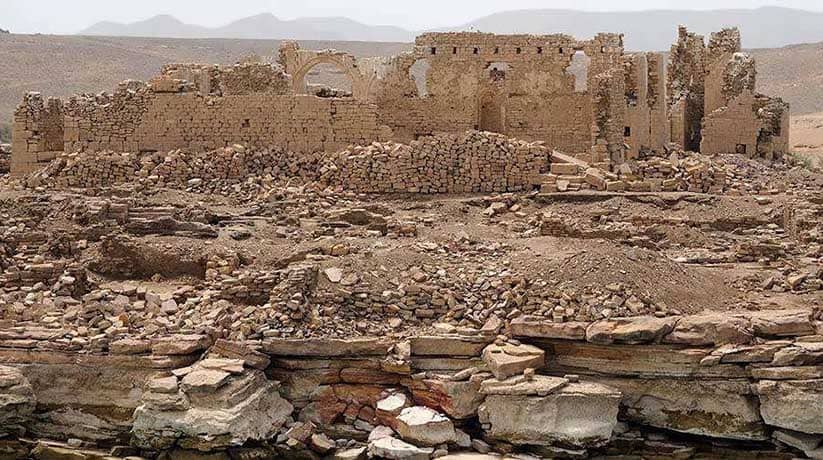Qasr Ibrim Aswan Egypt tours, prices, booking, reviews
Qasr Ibrim Aswan Egypt stood on the highest of three headlands one day. It was on the east bank of the Nile some 70 meters above the River in Aswan, Egypt. In fact, it was before the construction of the High Dam south of Aswan. Today, Qasr Ibrim Aswan is the last on Lake Nasser before reaching Abu Simbel. Visitors may only gaze upon it from the Lake Nasser Cruise boat. In fact, the site is no longer accessible by tourists. However, the Egypt Exploration Society does continue the work on the site. The work is since 1959. In fact, Qasr is an Arabic word which means fort. So, the Fort of Ibrim is the English translation of Qasr Ibrim. The name derived from its ancient Meroitic name, Pedeme. In classical texts, it called Primis. Moreover, in Coptic called Phrim which corrupted to Ibrim in Arabic.
Qasr Ibrim Aswan site built up during the Middle Kingdom. It was when the 12th Dynasty kings established control of the trade route along the Nile. However, the earliest archaeological evidence for the site dates back to 1000 BC. The site is famous for its strategic importance early on. In fact, there were fights for its possession throughout the centuries. After the defeat of Antony and Cleopatra, Egypt became a part of the Roman Empire. It was at the Battle of Actium in 31 BC. At that time, a Roman garrison established at Aswan. It attacked by the Nubian, perhaps under a queen by the name of Amanirenas. In fact, she captured and held Aswan, Elephantine and Philae. However, the Nubian soon driven south where the Romans occupied the site.
Further details about Qasr Ibrim Aswan Egypt:
The Roman wanted to fix their southern boarder at this location. It was During the reign of the Roman Emperor, Augustus. The Nubian again attacked. It was after a peace treaty drawn up and the Romans withdrew. Others came and left, that is why the site not did not complete and abandoned until 1811. The earliest inscription evidence found at the site is a stela. It is from the reign of Amenhotep I which dedicated early in the New Kingdom. This stela dates back to the eighth year of the kings reign. In fact, it is now in the British Museum in London. It actually discovered in a Christian cathedral at the site where it reused in one of the crypts. In fact, the site of Qasr Ibrim Aswan was also important in religion wise.
The site cut low down into the cliffs and faced the ancient capital of the district which known as Miam. It also known as four shrines. Moreover, it built by local high officials who dedicated to local forms of Horus. It was besides to the deities of the First Cataract and to the goddess Hathor. In fact, these shrines relocated. It was because of the possibility of destruction by the rising waters of Lake Nasser. The shrine built by Usersatet who was a viceroy of Kush. It was during the reign of Amenhotep II. Now, it re-erected in the New Nubian Museum in Aswan. The others did not reconstruct. Also, a Stela of Seti I already moved to new Kalabsha. There, it re-erected to the south of the main Ptolemaic temple at that location.
More details about Qasr Ibrim Aswan Egypt:
In fact, the old Egyptian temples elsewhere closed. It was following the dictates of Theodosius I in 390 AC. In fact, those at Qasr Ibrim Aswan continued to flourish. However, the temple of King Taharqo converted into a Christian church. The temple of Isis located at the site destroyed. In the seventh century, a cathedral church dedicated to the Virgin Mary built here. It used blocks from the old temples. The site became a great center of pilgrimage and later, a bishopric. Many of the pilgrims left carved depiction of feet at the site to record their journey. The intact grave of Bishop Timotheos buried here in the fourteenth century. He found in the north crypt of the cathedral. The burial also included his letters of appointment from the Patriarch of Alexandria. In fact, they date back to 1372 AC.
Further details about Qasr Ibrim Aswan Egypt:
Christian burials were very simple affairs during this period. The bodies of the deceased usually wrapped in a shroud. Moreover, they laid in a pit covered with stones or a brick canopy. Grave goods were no longer provided for the burial of ordinary people. However, those of clerics rather more splendid. The Body of Bishop Timotheos buried in his bishop’s robes. Furthermore, he buried with his benediction iron cross and other belongings. These are now in the British Museum in London. They are together with a page from the Book of Revelation. This book written in the Old Nubian language using the Coptic alphabet. This artifact also discovered at Qasr Ibrim Aswan.
















